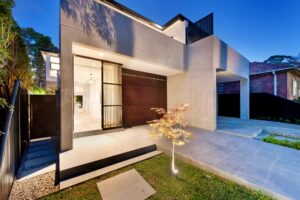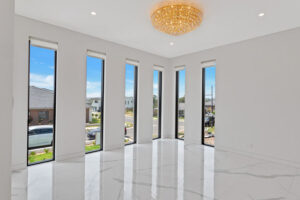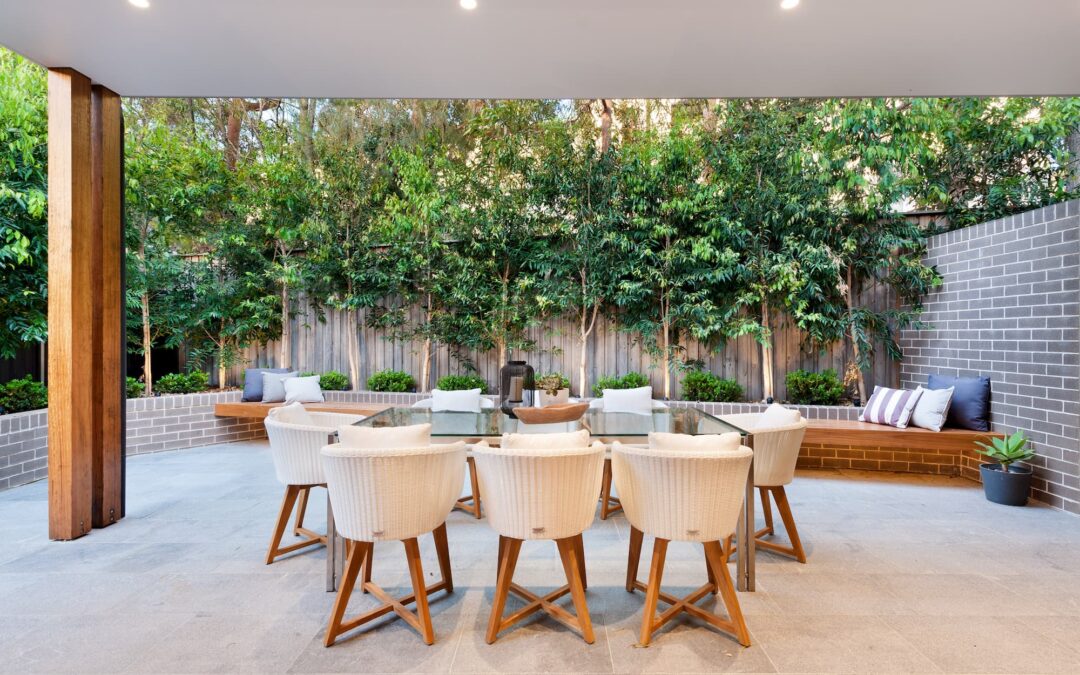In the bustling metropolis of Sydney, where urban development is not only a necessity but also a testament to progress, a revolution in construction methods is underway. As the city strives to meet the demands of a rapidly growing population while balancing environmental concerns, the rise of modular homes Sydney has emerged as a beacon of hope, promising to deliver buildings faster, cheaper, and with greater sustainability than ever before.
The Modular Advantage: Modular Homes Sydney
Modular construction, also known as off-site construction, entails the manufacturing of building components in a controlled factory environment, which are then transported to the construction site for assembly. This departure from traditional on-site construction methods offers several distinct advantages that have caught the attention of developers, architects, and policymakers alike.
One of the most significant benefits of modular construction is its efficiency. By shifting the bulk of construction activities away from the chaotic and often unpredictable environment of the construction site to a controlled factory setting, projects can be completed in a fraction of the time required for conventional construction. This streamlined process not only reduces project timelines but also minimizes the disruptions and inconveniences typically associated with on-site construction, such as noise pollution and traffic congestion.
The controlled environment of a factory enables unparalleled precision and quality control. Building components are manufactured to exact specifications using advanced machinery and techniques, ensuring consistency and uniformity across the entire project. This results in higher-quality buildings that are less prone to defects and structural issues, providing greater peace of mind to developers and occupants alike.
Sustainability at the Core
In addition to its efficiency and quality benefits, modular construction is also gaining traction in Sydney due to its inherent sustainability. With the global climate crisis looming large, the construction industry is under increasing pressure to reduce its environmental footprint and embrace more eco-friendly practices. Modular homes Sydney offers a compelling solution to this challenge.
One of the key ways in which modular construction promotes sustainability is through waste reduction. By manufacturing building components in a factory setting, material waste is significantly minimized compared to traditional on-site construction methods, where excess materials often end up in landfills. Additionally, the precision engineering and standardized processes employed in modular construction result in more efficient use of materials, further reducing waste and resource consumption.
Furthermore, modular construction facilitates the integration of sustainable technologies and practices into building design. From energy-efficient HVAC systems to solar panels and green roofs, sustainable features can be seamlessly incorporated into modular building components during the manufacturing process. This not only reduces the environmental impact of the building but also enhances its long-term sustainability and energy performance.
Driving Economic Growth
Beyond its environmental benefits, the rise of modular homes Sydney is also driving economic growth and creating new opportunities for innovation and investment. As demand for more efficient and cost-effective construction solutions continues to grow, modular construction firms are expanding their operations and investing in new technologies to meet the market demand.
Moreover, the modular construction industry has the potential to generate significant employment opportunities and stimulate economic activity in Sydney and beyond. From skilled manufacturing jobs in factory settings to on-site assembly and installation roles, modular construction projects create a diverse range of employment opportunities across the construction supply chain. This not only benefits local economies but also helps to address broader socio-economic challenges such as unemployment and income inequality.
Challenges and Opportunities
While the rise of modular construction represents a promising development in Sydney’s construction industry, it is not without its challenges. One of the primary hurdles facing the widespread adoption of modular construction is the need for greater collaboration and coordination among stakeholders. Unlike traditional construction projects, which often involve multiple contractors and subcontractors working independently, modular construction requires close collaboration between architects, engineers, manufacturers, and builders to ensure seamless integration of building components and systems.
Additionally, there may be regulatory barriers and planning constraints that need to be addressed to fully realize the potential of modular construction in Sydney. From zoning regulations to building codes and permitting processes, policymakers and industry stakeholders must work together to create an enabling environment for modular construction to thrive.
Despite these challenges, the rise of modular construction in Sydney represents a significant opportunity to build better, faster, and more sustainably. By embracing this innovative construction method, Sydney can meet the growing demand for housing and infrastructure while reducing its environmental footprint and driving economic growth. As the city continues to evolve and expand, modular construction is poised to play a central role in shaping its future skyline for generations to come.

Modular Marvels: Transforming Sydney’s Housing Landscape
The Rise of Modular Homes in Sydney
Sydney, Australia’s vibrant capital, is renowned for its iconic skyline, bustling streets, and diverse neighborhoods. However, with rapid population growth and urbanization, the city faces significant challenges in meeting the housing needs of its residents. In response to these challenges, the rise of modular homes is reshaping Sydney’s housing landscape, offering a modern solution to address the demand for efficient, high-quality housing. This comprehensive exploration delves into the historical context, driving factors, and comparative advantages of modular homes Sydney.
Modular construction in Sydney traces its roots back to the mid-20th century, with the emergence of prefabricated housing solutions in response to post-war housing shortages. Initially utilized for temporary accommodation and remote site projects, modular construction gradually gained traction as advancements in technology and manufacturing processes improved.
Over the decades, modular construction evolved from basic prefabricated structures to sophisticated, customizable homes. Innovations in materials, design software, and assembly techniques have transformed modular homes from utilitarian dwellings to stylish, contemporary residences. Today, modular construction stands as a viable alternative to traditional building methods, offering speed, efficiency, and quality without sacrificing architectural integrity.
Factors Driving the Adoption of Modular Homes in the City
Population Growth
Sydney’s population continues to soar, placing immense pressure on the housing market. Modular construction offers a rapid and scalable solution to meet the growing demand for housing in the city.
Urban Density
With limited available land and increasing urban density, modular construction provides a compact and efficient housing solution. Modular homes can be built on smaller lots or integrated into existing urban environments with minimal disruption.
Cost Efficiency
Rising construction costs and labor shortages have made traditional building methods increasingly expensive. Modular construction’s streamlined manufacturing process and reduced onsite labor requirements result in cost savings for developers and homeowners.
Sustainability
As environmental awareness grows, there is a growing demand for sustainable housing solutions. Modular construction’s controlled manufacturing process minimizes waste, reduces carbon emissions, and promotes energy efficiency, aligning with Sydney’s sustainability goals.
Innovation and Customization
Modular construction allows for greater design flexibility and customization options compared to conventional building methods. Homebuyers can choose from a range of modular designs or work with architects to create bespoke homes tailored to their preferences and lifestyle.
Challenges and Future Outlook
Despite its numerous advantages, modular construction faces several misconceptions and challenges that need to be addressed:
Perception of Quality
Some people perceive modular homes as inferior in quality compared to traditionally built homes. Educating consumers about the rigorous quality control measures and advanced manufacturing techniques employed in modular construction can help dispel this misconception.
Design Limitations
There is a misconception that modular homes are limited in design and customization options. Highlighting the flexibility and adaptability of modular construction to accommodate various architectural styles and design preferences can help overcome this perception.
Regulatory Hurdles
Regulatory barriers and zoning restrictions may hinder the widespread adoption of modular construction in some areas. Collaborating with policymakers and local authorities to streamline permitting processes and update building codes can facilitate the integration of modular homes into the mainstream housing market.
Supply Chain Disruptions
Like any manufacturing process, modular construction is susceptible to supply chain disruptions, such as material shortages or production delays. Developing resilient supply chains and contingency plans can mitigate the impact of these challenges and ensure project continuity.

Potential Future Trends and Innovations in the Modular Home Industry in Sydney
The modular home industry in Sydney is poised for continued growth and innovation. Some potential future trends and innovations include:
Technological Advancements
Advances in robotics, automation, and digital modeling are poised to revolutionize the modular construction process, further enhancing efficiency, precision, and customization capabilities.
Off-Site Manufacturing Hubs
The establishment of dedicated off-site manufacturing hubs or facilities can optimize production processes and economies of scale, driving down costs and accelerating project delivery.
Integration of Sustainable Technologies
The integration of sustainable technologies, such as renewable energy systems, smart home features, and green building materials, can enhance the environmental performance and energy efficiency of modular homes Sydney.
Modular High-Rise Construction
As urban density increases, modular construction techniques may be adapted for high-rise buildings and multi-unit developments, offering a scalable solution to address Sydney’s housing needs in dense urban areas.
Policy Implications and Opportunities for Further Integration of Modular Homes into Sydney’s Housing Market
Policy implications and opportunities for further integration of modular homes into Sydney’s housing market include streamlining regulations and permitting processes to accommodate modular construction techniques, offering financial incentives and support mechanisms such as tax incentives and grants to promote adoption, fostering public-private partnerships to accelerate delivery, promoting innovation and research in modular construction, launching education and awareness campaigns to dispel misconceptions and stimulate demand, investing in supportive infrastructure to facilitate growth, and encouraging collaborative planning and design processes involving stakeholders from the early stages of development. These measures collectively aim to create an enabling environment for modular construction, addressing housing challenges and unlocking its potential to provide sustainable, affordable, and quality housing solutions in Sydney.

